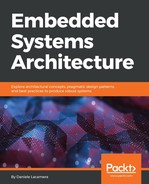Mostly built on top of constrained microcontrollers, such as the Cortex-M0, low-power embedded systems are often little, battery-powered or energy-harvesting devices, sporadically connecting to remote services using wireless technologies. These small, inexpensive systems are often used in install-and-forget scenarios, where they can operate for years on a single integrated power source with nearly no maintenance costs.
Bare-metal architectures are still very popular in these scenarios, however, a few very lightweight operating systems have been designed to organize and synchronize tasks using as few resources as possible, while still keeping a specific focus on power saving and connectivity. The challenge for the development of this kind of operating system is to find a way to fit complex networking protocols into a few kilobytes of memory. Future-proof systems designed for the IoT services offer native IPv6 networking, often through 6LoWPAN, and fully equipped yet minimalist TCP/IP stacks, designed to sacrifice throughput in favor of smaller memory footprints.
Due to their small code size, these systems may lack some advanced features. For example, they do not provide any specific safety strategies, as they are based on a flat model where applications are allowed to access all the resources mapped in memory.
